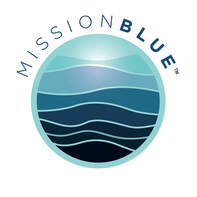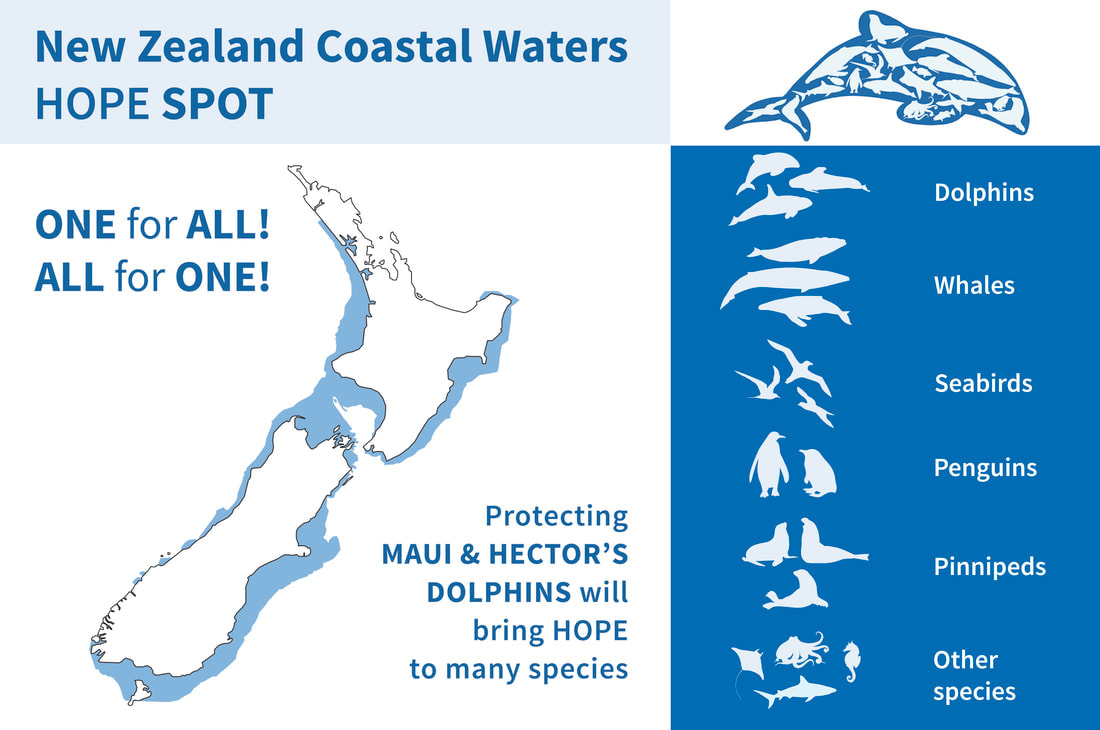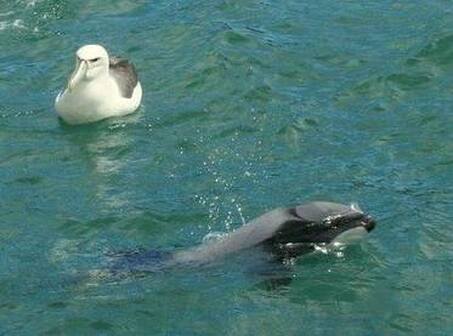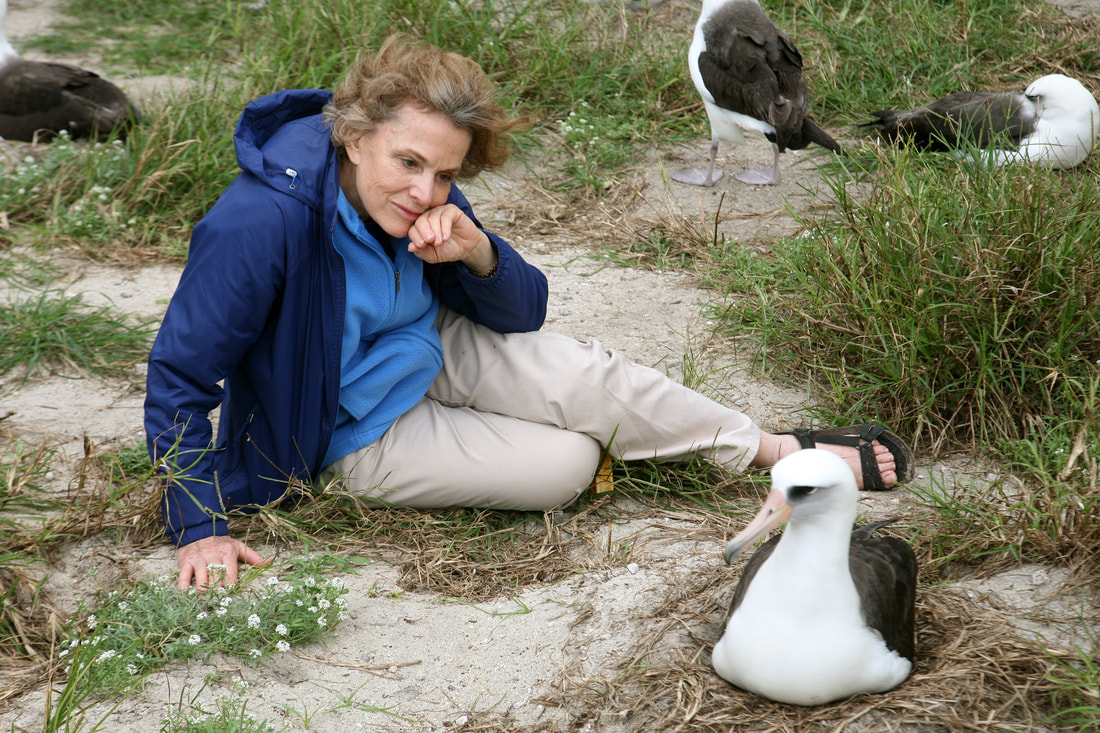New Zealand’s coastal waters declared a Mission Blue HOPE SPOT to protect
Maui and Hector's dolphins
|
Dr Barbara Maas, and New Zealand Maui and Hector's dolphin expert Prof Elisabeth Slooten from the University of Otago championed the habitat of the world's smalles dolphins as a Mission Blue Hope Spot in support of urgent protection measures to prevent the dolphins' extinction. The new Hope Spot covers most of New Zealand’s more than 17,000 km coastline up to a depth of 100 meters. It ranges from subtropical in the north to subantarctic in the south and features spectacles of outstanding natural beauty both above and below the water line. These rich waters also boast a spectacular variety of marine species, many of which are rare and can be found nowhere else. New Zealand sea lions, yellow-eyed and little blue penguins, fairy terns, Buller’s and Royal albatross, as well as population of at least 718 pygmy blue whales that was only recently confirmed as a New Zealand resident. It also touches the migratory paths of some of the great whales, as well as long-finned pilot whales, white sharks, basking sharks and spinetail devil rays. Māui and Hector’s dolphins in particular have captured the hearts of New Zealanders and the international community alike. They have also increasingly drawn worldwide attention, as scientists have watched their numbers decline sharply since the 1970s. Māui dolphins are now the rarest marine dolphins on Earth. We have campaigned for years for a ban on gillnets and trawlers and an end to oil and gas exploration and extraction in the dolphins’ habitat in concert with international scientific institutions. Under the motto ‘One for all! All for one!’, our Hope Spot is intended to help put in place long overdue measures to protect these unique waters and facilitate the dolphins’ recovery before it’s too late.
Although there are only around 50 Māui dolphins left, just 19 percent of their habitat is protected from fishing with gillnets and just five percent from trawling. Under these conditions, the dolphins’ extinction is inevitable. New Zealand has a reputation as a leader in cetacean conservation, biodiversity protection and sustainability. It is time for the government to bring protection measures for its only endemic dolphin into line with international scientific advice, or risk its credibility. We are grateful for the support for this species from across the world, including New Zealand conservation groups Our Seas Our Future Charitable Trust, the New Zealand Whale and Dolphin Trust and Maori group Ngati Te Wehi. World renowned oceanographer Dr Sylvia Earle first launched the Hope Spots programme in 2009 to generate public support for a global network of marine protected areas. While around 12 percent of the world's land area enjoys some form of protection, less than six percent of the ocean is protected in any way. Hope Spots are intended to bring about a significant increase in ocean protection from less than 6% today to 30% by the year 2030. “We only have one chance to get it right with the Hector’s and Māui dolphins – and that time is now,” said ocean giants and head of Mission Blue, oceanographer Dr Sylvia Earle. "With the declaration of New Zealand's coastal waters as a Mission Blue Hope Spot, perhaps we can all come together and do what it takes to keep these magnificent and rare dolphins away from the brink of extinction." |
TAKE ACTION NOW
HOPE SPOT GOALS
|







